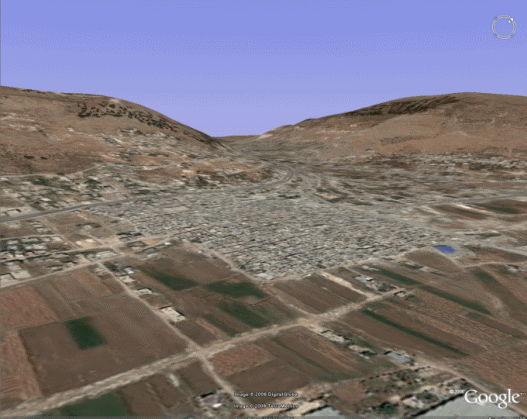Dear Friends,
As many of you know, I've been posting some
articles about the origin of the name Ebola, the viral pandemic which
is being used to frighten, kill and terrify the planet. Last time, I
posted evidence, which shows the Ebola virus derived it's name from
missionaries serving in West Africa during the 19th Century. The
missionaries named the region after Mt. Ebal where Joshua pointed out to
Israel the consequences of returning to a life of sin. These
missionaries lived amidst a deadly sea of infectious disease, plague,
famine and witchcraft.
We know the location of Mt. Ebal near modern day Nablus, because of
the Bible's account. This is where Joshua presented Israel a choice to
dwell upon a mountain of God's bountiful blessings, or subsist upon a
barren rocky pile of curses. Until Passover 1980 this incident was
thought by most Biblical archeologists as mere allegory. The discovery
of Joshua's sacrificial altar upon Mt. Ebal became a powerful faith
affirming event in the life of George Zertal a graduate student
assigned to conduct a survey of Mt. Ebal. He discovered the altar built
by Joshua to commemorate the sacrifice he made there for all Israel to
enter into the Promised Land.
This terrible Ebola pandemic comes at an important time in the
life of our nation. I don't think it's mere happenstance,
or
unfortunate timing. We all need to individually and collectively choose
where we wish to dwell for eternity. Are we going to live among God's
blessings, or the consequences of dwelling apart from God.
Agape,
Michael Curtiss
Mount
Ebal is north of the West Bank city of Nablus and rises above the
Valley of Shechem. The mountain (Arabic el-Iclamiyeh) reaches a height
of 1,402 ft. above the floor of the valley, and 3,077 ft. above the
level of the Mediterranean.
The Samaritans suggest that Gerizim is the higher; but it is actually
more than 200 ft. lower than Ebal. These two
mountains overhang the pass through which the main artery of
intercourse between East and West runs. The ancient Shechem
probably stood farther to the East than it does today. The lower slopes of
Ebal ascending from Nablus, are covered with gardens and orchards with
vines, figs and olives. Rough and rocky terraces with thistles and
prickly shrubs are on the higher elevations.

Mount Gerizim on the left, Mount Ebal on the right.

View of Mount Ebal from Mount Gerizim with the corridor in between.
It was from Mount Ebal, where the curses of the LORD GOD were pronounced on the disobedient. The second twin, Mount Gerizim was the place where blessings of the LORD GOD were spoken to the obedient.

Mount Gerizim on the left, Mount Ebal on the right.

View of Mount Ebal from Mount Gerizim with the corridor in between.
It was from Mount Ebal, where the curses of the LORD GOD were pronounced on the disobedient. The second twin, Mount Gerizim was the place where blessings of the LORD GOD were spoken to the obedient.